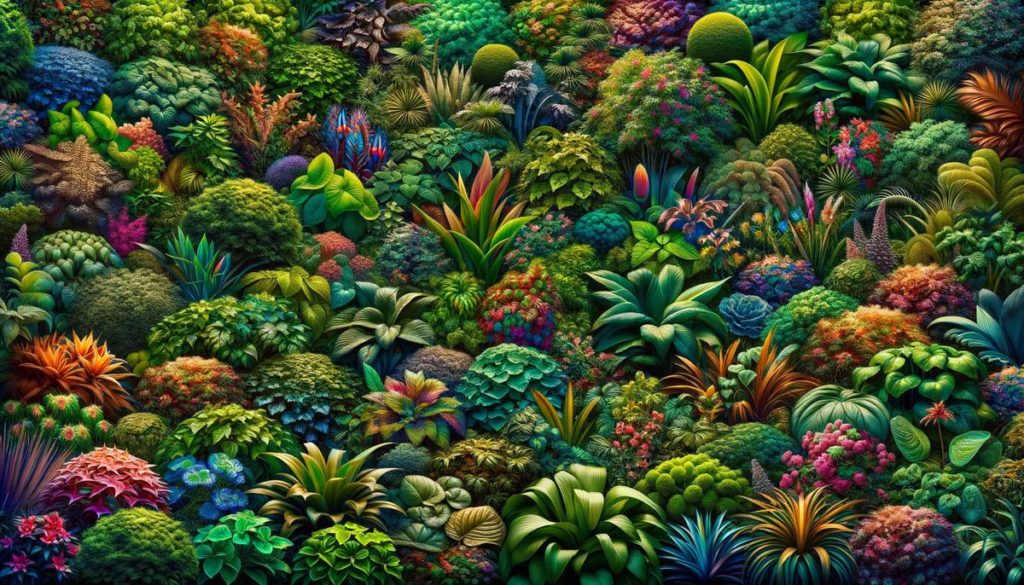Table of Contents
When it comes to landscape design, creating a beautiful and thriving garden is much like putting together a puzzle, where each piece must fit perfectly for the complete picture to emerge. Understanding landscape zones forms the foundation of this process, guiding gardeners in selecting plants that not only survive but flourish in their specific climates. This article explores various aspects crucial to gardening success, from choosing the right plants and incorporating hardscaping to adopting sustainable practices and enhancing outdoor spaces with lighting and accessories. Each section builds on the last, offering insights into creating harmonious and sustainable gardens that reflect both personal style and environmental responsibility.
Understanding Landscape Zones
Landscape zones, otherwise known as gardening or hardiness zones, are geographical areas defined by their climate conditions, especially their temperature ranges. These zones are crucial for gardeners and landscapers because they guide the selection of plants that can thrive in a specific location. By understanding the zone in which your garden lies, you can ensure that you choose plants well-suited to endure the local winter temperatures. This categorization helps prevent the disappointment of plants dying due to unsuitable weather conditions and promotes landscape success and sustainability.
Knowing your landscape zone impacts not only the survivability of plants but also influences watering needs, soil types, and pest control strategies. For instance, plants in a warmer zone may require more frequent watering and different soil amendments than those in cooler areas. Similarly, certain pests are more prevalent in specific zones, affecting how you protect your plants. Acknowledging the importance of landscape zones in gardening practices leads to more efficient and environmentally-responsible gardening. It allows gardeners to work with nature rather than against it, ensuring a harmonious and thriving garden ecosystem.
Choosing the Right Plants
Selecting plants that flourish in your personal landscape extends beyond understanding zones, touching upon the nuanced terrain and specific conditions of your space. Comprehensive observations of your landscape during various times of the day can uncover direct and filtered sunlight patterns, offering cues to the environment you’re working with. For thriving vegetation, consider plant species that naturally adapt to the quality of light available in your area. For instance, areas bathed in full sun demand species that revel in abundant light, while shaded areas call for plants tolerant of lower light levels.
Another pivotal consideration is the assessment of your landscape’s soil condition. Different plants thrive in varied soil types, be it sandy, loamy, or clay-rich soils. Begin with a soil test, commonly available through local agricultural extension services, to gain insights into the soil’s pH and nutrient levels. This knowledge empowers you to select plants suited to your soil’s natural state or informs you of necessary amendments for nurturing a wider range of species. Integrating these considerations into your choices streamlines the path to a vibrant, resistant garden steeped in harmony with its natural setting and less reliant on external inputs for success.
By focusing on these curated strategies, you engender a lush, self-sustaining garden that celebrates and elevates the unique characteristics of your landscape.
Incorporating Hardscaping
Hardscaping, a pivotal element in landscape design, complements the natural softscape to create functional, visually striking outdoor spaces. This aspect of landscaping involves the use of non-living materials such as stone, brick, metal, and wood to construct durable features like pathways, patios, retaining walls, and water features. Hardscaping serves not only a practical purpose by defining spaces and improving accessibility but also adds texture and contrast to the garden’s palette. The careful selection and placement of hardscape materials can enhance the aesthetic appeal of a garden, guiding the eye and lending a sense of structure to the overall landscape design.
Incorporating hardscaping into a landscape design introduces an element of permanence and stability that contrasts with the changing seasons and growth cycles of plants. It plays a crucial role in water management, with features like paved areas and retaining walls directing rainfall away from sensitive plantings and preventing soil erosion. Furthermore, hardscaping can extend the usability of outdoor spaces into the evening hours with strategic lighting and provide areas for recreation and relaxation. When designed thoughtfully, hardscaping complements the living elements of a garden, creating a cohesive outdoor environment that meets the needs of its users while enhancing the natural beauty of the site.
Sustainability in Landscape Design
To elevate your landscape design to be more eco-friendly, consider adopting sustainable water management techniques. These strategies are not only beneficial for the environment but also reduce maintenance needs and costs. A profound method is the implementation of rain gardens or bioswales, which naturally filter runoff and recharge local groundwater, mitigating the effects of heavy rainfalls and reducing erosion.’
Similarly, optimizing your irrigation practices by opting for drip irrigation systems can directly deliver water to the roots of plants, minimizing waste and evaporation. Incorporating native plants that are well-adapted to your region’s climate and hydrology can further streamline water use, ensuring that your garden thrives without excessive water input. These approaches collectively contribute to a landscape that is not only visually appealing but also environmentally responsible and sustainable.
Additionally, the conscious selection and use of materials in your landscape design can significantly impact its eco-friendliness. Opting for recycled, locally sourced, or renewable materials for hardscaping elements like paths or patios not only reduces your carbon footprint but also supports local businesses. When considering new plantings or soil amendments, choose organic and chemical-free options to promote a healthier ecosystem within your garden. This mindful selection helps in creating a space that is not only good for the planet but also safe and enjoyable for its inhabitants.
By integrating these practices, you establish a garden that aligns with eco-friendly principles, paving the way for a greener, more sustainable relationship with the environment. This holistic approach to gardening champions sustainability at its core, ensuring that your outdoor space contributes positively to the local ecology and offers a sanctuary for native wildlife.
Lighting and Accessory Features
Turning our focus to landscape lighting and accessorizing, it’s essential to consider both functionality and aesthetics to enhance your outdoor spaces effectively. Landscape lighting is not just about illuminating paths and features; it’s about creating an ambiance that complements your garden and outdoor living areas while ensuring safety and security. First, layer your lighting to achieve balance and depth. Start with general lighting for visibility and safety, then add task lighting for specific activities such as outdoor cooking or reading. Accent lighting can highlight architectural features, plants, or water elements, adding drama and interest to your landscape.
When accessorizing your garden, think of your outdoor space as an extension of your interior. Choose accessories that reflect the style of your home for a cohesive look. Durable, weather-resistant materials are key to ensure longevity. From functional items like outdoor rugs and furniture to decorative elements like sculptures or bird baths, each piece should serve a purpose, whether it’s to provide comfort, add color, or bring a personal touch to your garden. Strategically placed mirrors can enlarge a small space, while wind chimes and water features add soothing sounds. Remember, less is often more; choose quality over quantity to avoid clutter and maintain a tranquil, inviting outdoor retreat.
As we’ve explored the multifaceted approach to gardening—from understanding your landscape’s climate zone to integrating sustainable practices—it becomes clear that successful gardening is about more than just planting seeds; it’s about creating an ecosystem where every element works in harmony. By carefully selecting plants suited to your area, incorporating durable hardscaping, managing water wisely, choosing eco-friendly materials, and adding thoughtful touches with lighting and accessories, you can craft an outdoor space that not only looks beautiful but also contributes positively to the environment. This holistic view of gardening ensures that your efforts today will lead to a flourishing garden that can be enjoyed by future generations.

